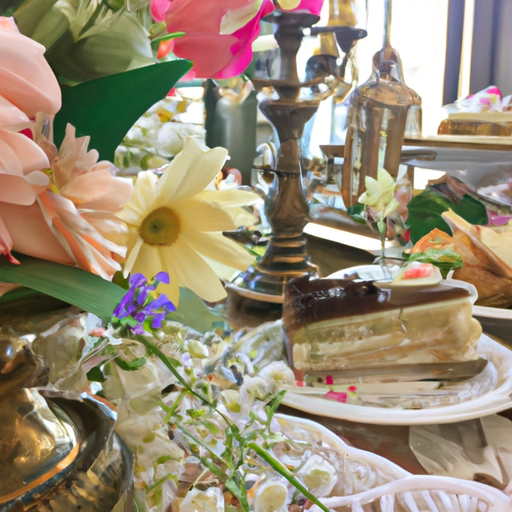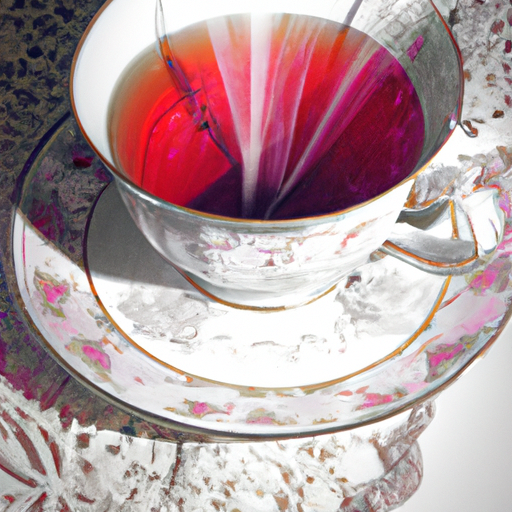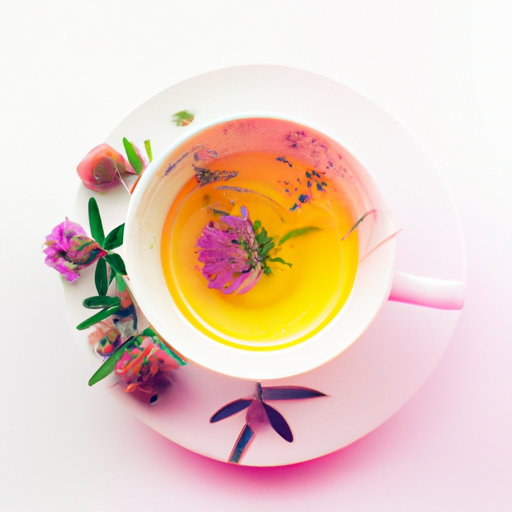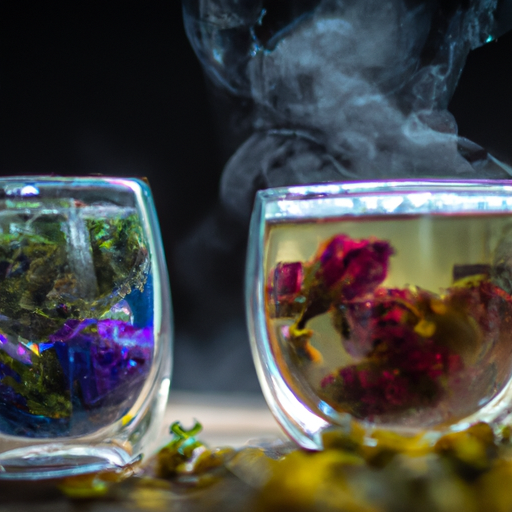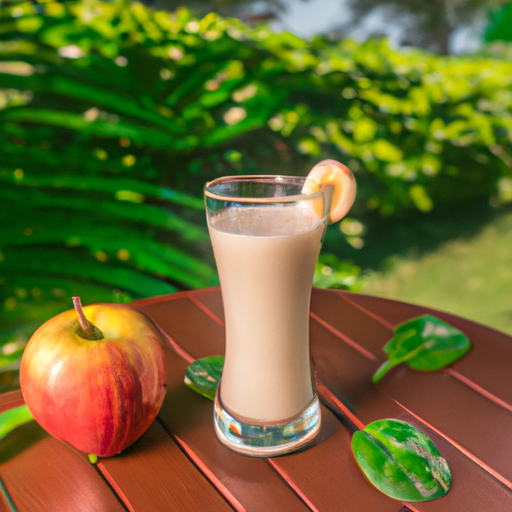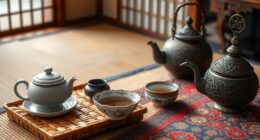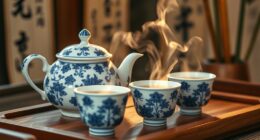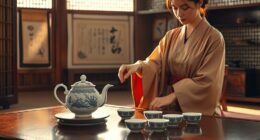Imagine this scenario: it’s a cool afternoon in London, Ontario, and you are greeted by the elegance of Villa Cornelia Restaurant. Walking into the impeccably renovated Victorian house, a wave of nostalgia envelops you.
The navy blue tablecloths, silver cutlery, and vintage decor transport you back to a bygone era. It’s here that the magic of afternoon tea awaits.
At Villa Cornelia, they take tea seriously. With an extensive selection of 25 teas sourced from Harney & Sons and DAVIDsTea, every tea lover is sure to find their perfect blend. The teas are served in unique vintage teapots, allowing you to steep your tea to your preference, just like they did in the old days.
But it’s not just the tea that makes Villa Cornelia special. The food menu for afternoon tea is a delight, with a variety of savories, traditional English style scones with clotted cream and strawberry preserves, and beautifully presented bite-sized desserts. And fear not, gluten-free and vegetarian options are available with advance notice.
With its convenient downtown location and ample parking, Villa Cornelia provides the perfect setting to relax and indulge in a traditional English tea experience. So why not treat yourself and step back in time for an afternoon of elegance and charm?
Key Takeaways
- Villa Cornelia Restaurant in London, Ontario hosts occasional afternoon tea events in a restored Victorian home built in 1892.
- The afternoon tea menu includes a selection of 25 different teas, as well as savory items, traditional English scones, and bite-sized desserts.
- Gluten-free and vegetarian options are available with advance notice.
- The price for afternoon tea at Villa Cornelia is $45.00 per person, with a reduced price of $25.00 for children ages 10 and under.
What to Expect
I can expect a delightful afternoon tea experience at Villa Cornelia in London, Ontario. They offer a wide selection of teas sourced from renowned tea companies like Harney & Sons and DAVIDsTea. The teas are served in unique vintage teapots, allowing the flavors to steep to perfection. Villa Cornelia also offers gluten-free and vegetarian options with advance notice, including gluten-free bread and lettuce wraps. The food presentation is exquisite, with a variety of traditional English savouries, scones with clotted cream and strawberry preserves, and beautifully crafted bite-sized desserts. Everything is served in the elegant dining room, adorned with navy blue tablecloths, silver cutlery, and vintage decor, creating a charming and inviting atmosphere.
Menu and Pricing
The menu at Villa Cornelia offers a variety of savoury sandwiches, traditional scones with clotted cream and preserves, and an assortment of bite-sized desserts, all served with a selection of 25 different teas.
For those with dietary restrictions or special accommodations, Villa Cornelia is able to provide gluten-free and vegetarian options with advance notice. This attention to detail sets them apart from other afternoon tea services in Ontario.
In terms of pricing, Villa Cornelia offers their afternoon tea service at a reasonable cost of $45.00 per person, regardless of dietary restrictions. This is comparable to other tea services in the area.
The portion sizes are generous, with 5 savouries, 1 scone, and 6 sweets per person.
Overall, the menu and pricing at Villa Cornelia provide a delightful and satisfying afternoon tea experience.
Location and Reservations
Located in the heart of downtown, this charming Victorian restaurant on Kent Street offers a unique and delightful experience for tea lovers, and reservations can easily be made online.
Parking options and availability:
- Limited free parking is available at the restaurant.
- Street parking is also available nearby.
How to make reservations:
- Reservations can be made conveniently online through their website.
- Simply select the desired date and time for your afternoon tea experience.
- Provide the required information and confirm your reservation.
Whether you’re looking for a cozy spot to enjoy a leisurely afternoon tea or planning a special gathering with friends, Villa Cornelia is the perfect destination. The historic house provides a warm and inviting atmosphere, while the attentive staff ensures a memorable experience. Don’t miss the opportunity to indulge in their wide selection of teas and delectable treats. Reserve your spot today and prepare to embark on a delightful journey into the world of traditional English tea time.
Frequently Asked Questions
Are there any vegetarian options available for afternoon tea at Villa Cornelia in London, Ontario?
Yes, vegetarian options are available for afternoon tea at Villa Cornelia. They offer a variety of vegetarian entrees and even have vegan options upon request. It’s a great choice for those with dietary preferences or restrictions.
Can I make a reservation for afternoon tea at Villa Cornelia online?
Yes, you can easily make a reservation for afternoon tea at Villa Cornelia online. They have an online booking system that allows you to check availability and secure your spot for this delightful experience.
Does Villa Cornelia offer gluten-free options for their afternoon tea service?
Yes, Villa Cornelia does offer gluten-free options for their afternoon tea service. They accommodate dietary restrictions and provide gluten-free bread and lettuce wraps as part of their savoury menu.
Are there any parking restrictions at Villa Cornelia in London, Ontario?
Yes, there are nearby parking options available at Villa Cornelia in London, Ontario. Although the restaurant has limited free parking, there is also street parking available for guests.
What is the maximum number of people that Villa Cornelia can accommodate for afternoon tea?
They say "The more, the merrier." Villa Cornelia can accommodate a maximum of [number] people for afternoon tea. They also offer gluten-free and vegetarian options for those with dietary restrictions.

